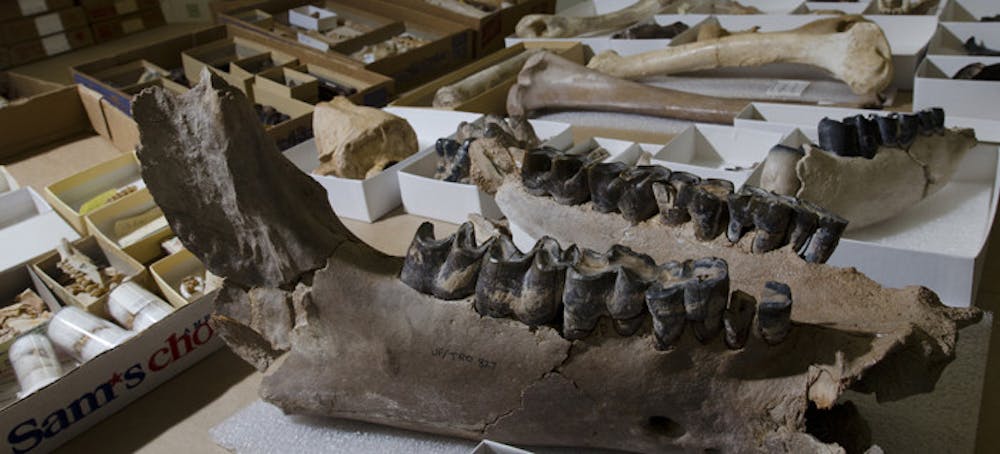It became more than just a project.
John Waldrop moved to Gainesville his sophomore year of high school. And when his new biology teacher assigned a project, he knew exactly what he wanted to do.
There was a creek nearby into which he looked. There, Waldrop found shark teeth and a passion for paleontology.
"It sort of took off from there," he said.
Waldrop, a retired middle school science and community college teacher from Lake Wales, uncovered, documented and collected for about 50 years, amassing the world's second-largest collection of vertebrae fossils in Florida.
In early May, he donated it to the vertebrate paleontology division at the Florida Museum of Natural History. There are between 40,000 to 50,000 identifiable specimens: the museum's largest private donation. Waldrop's donation also includes about 3,000 boxes worth of invertebrate fossils, according to UF News.
His 10th grade biology project stuck with him. Waldrop frequented creeks in the area, eventually traveling through phosphate mines and shell pits.
Waldrop collected "phosphate bits" for about 10 years since his wife's parents lived near Fort Meade. It gave him material for his UF master's thesis in 1971 - fossils of horses in Florida - and other projects.
"I've collected all over the state," Waldrop said. "There aren't many places I haven't collected."
Richard Hulbert, collections manager in the Division of Vertebrae Paleontology at the Florida Museum of Natural History, said Waldrop's donation increases the museum's collection by 10 percent; it already had about 450,000 fossils.
"I'm sure there will be surprises as we go through details," Hulbert said.
The donation contains critical and unusual specimens that complement the museum's collection. It has a few specimens from the Peace River in southwest Florida, Hulbert said. Waldrop gathered there in the 1970s - before hobbyists collected many of the fossils.
Inside the boxes lie sharks, fish, horses, rhinos and elephants. Waldrop covered the entire time frame known for Florida fossils, Hulbert said. Specimens range from the Eocene epoch (40 million years ago) to the end of the Ice Age (11,000 years ago).
"He didn't collect a few flashy specimens," Hulbert said. "He'd collect the entire fauna. He has collected everything from the big stuff to the small stuff."
Fossils are exhibited at the museum, but it's primarily used for research. They give Hulbert and researchers a better understanding of specimens' diets and locations.
According to Hulbert, researchers at the museum take samples of the specimens and put them in a mass spectrometer, which samples different isotopes of carbon and oxygen. It allows the museum to demonstrate how climate changed in Florida over millions of years and how animals responded.
Waldrop realized the significance of his collection early on. Hulbert said sometimes fossils get passed on to heirs who don't know what to do with them; they'll break or sell them, not realizing their importance.
It was a matter of when and how Waldrop would donate his life's work. What makes Waldrop's collection so valuable are his systematic notes. Identifying the animal wasn't too important at that moment; he could always do it later. Waldrop focused on detailing the location of the fossils, recording the rock layers and condition of the find.
"By donating to the museum, he has preserved it for scientists to study for decades," Hulbert said, "if not centuries."






